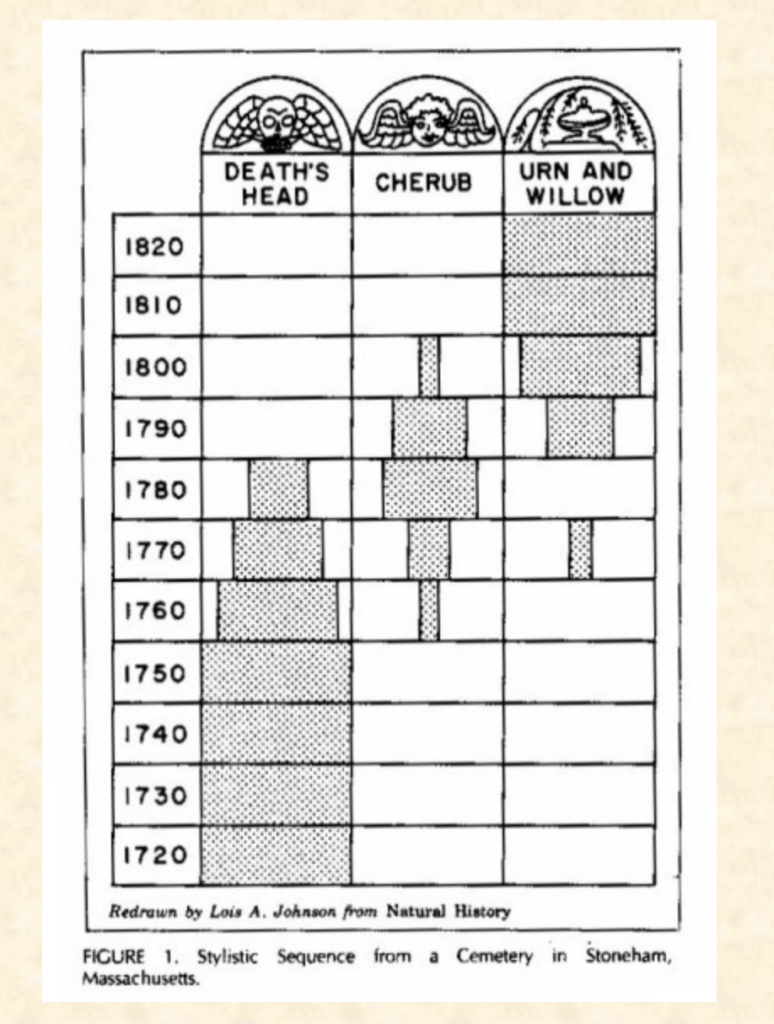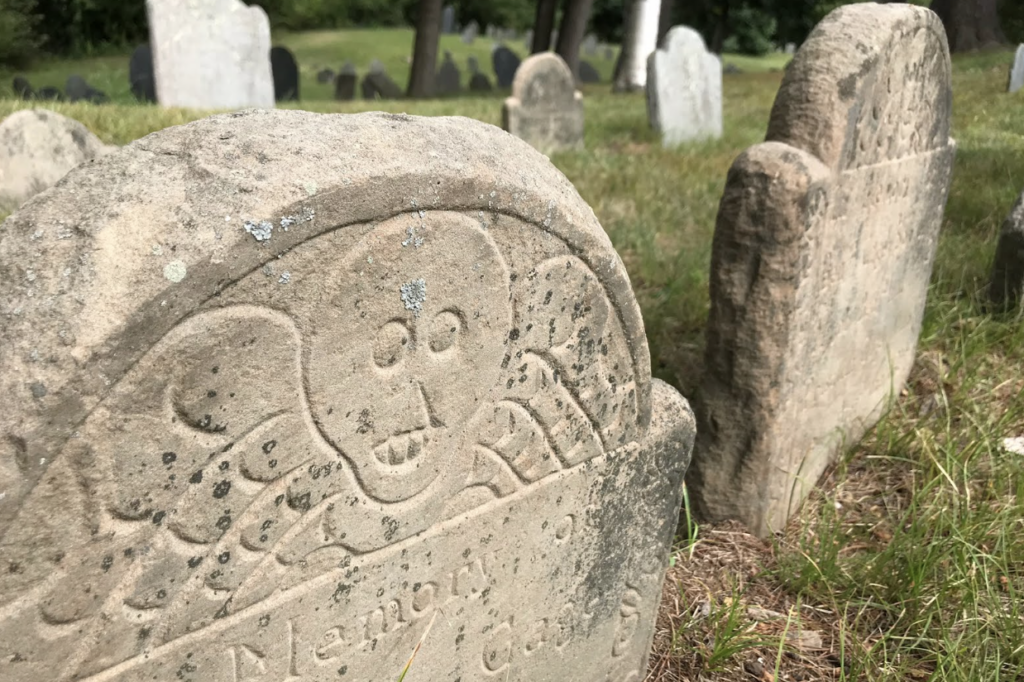Archaeologists used seriation techniques to analyze and chronologically order styles of gravestones in New England Puritan societies. Deetz and Dethlefsen, two archaeologists in the 1900s, organized the markers into three main groups of designs and styles: the Death’s Head or Winged Skull, the Cherub, and the Urn and Willow (Figure 1) (Deetz and Dethlefsen 1967). One important note is the use of sedimentary brown sandstone, as opposed to white marble, during the colonial period, providing well-preserved gravestones for archaeologists to observe and analyze.

Gravestones are unique in their information about the person who died, including dates, professions, family members, and names. Gravestones are, therefore, artifacts that can be analyzed, as in this study, by their styles chronologically, but also the cultural changes that are represented. Deetz and Dethlefsen, along with other historians, analyzed the cultural changes during the time to hypothesize the reason for the evolutions in the styles of gravestones. For example, one conclusion was that the shift from the death’s head (Figure 2) tombstones to the winged cherub was because of a decline in orthodox puritanism. In addition, some cherub-style gravestones include the phrase “In Memory Of..” emphasizing the memorial of the individual rather than a set of religious beliefs (Windsor).

The changes in gravestones show shifts in culture and progressions in religion over time. Cherubs were engraved into the gravestones as an effort to resurrect, but as Puritans no longer questioned their salvation, the purpose and style of gravestones shifted as well. Instead, the urn and willow symbolize the grief of the lost loved one.
Since Deetz and Dethlefsen’s study and use of seriation to chronologize gravestone styles in New England Puritan societies, other archaeologists have examined gravestones in other parts of the United States, such as New York where there was more religious and ethnic diversity. Seriation techniques were again used to organize gravestone styles that were similar to each other to create a timeline of symbols used. One of the oldest cemeteries in New York City, Shearith Israel, has headstones from the late 1600s to the early 1800s, most of which lack symbols that were observed in New England (Pickman 2006). However, some similarities exist to the headstone shapes used in Christian society, such as the “three-lobed shape” that symbolizes a bed frame and the final rest associated with death.
Gravestones are essential and valuable artifacts to accompany the analysis of religious and cultural evolution changes. These artifacts contain written evidence and data to characterize symbols and shapes using seriation techniques, which can then be used to hypothesize and draw other conclusions about the developments of society at the time.
Other Links:
Citations:
“Colonial New York Gravestones.” Archaeology Magazine Online Features. Accessed September 17, 2023.. https://archive.archaeology.org/online/features/nycolonial/graves.html.
“Deaths’ Head, Cherubs, and Urns: Gravestone Iconography in New England.” New England Folklore. Accessed September 17, 2023. http://newenglandfolklore.blogspot.com/2018/09/deaths-head-cherubs-and-urns-gravestone.htm.
“Gravestones – Puritanism.” Revolutionary Windsor: The Windsor Historical Society. Accessed September 17, 2023. https://sites.google.com/a/windsorct.org/revolutionary_windsor/home/gravestones-puritanism.
“Plymouth Colony Gravestone Symbolism.” Historical Archaeology at the University of Illinois. Accessed September 17, 2023. http://www.histarch.illinois.edu/plymouth/deathshead.html.

Given the study you referred to was from over 100 years ago, how do you think archaeologists from today may reinterpret the results? What would change, and what would remain the same?